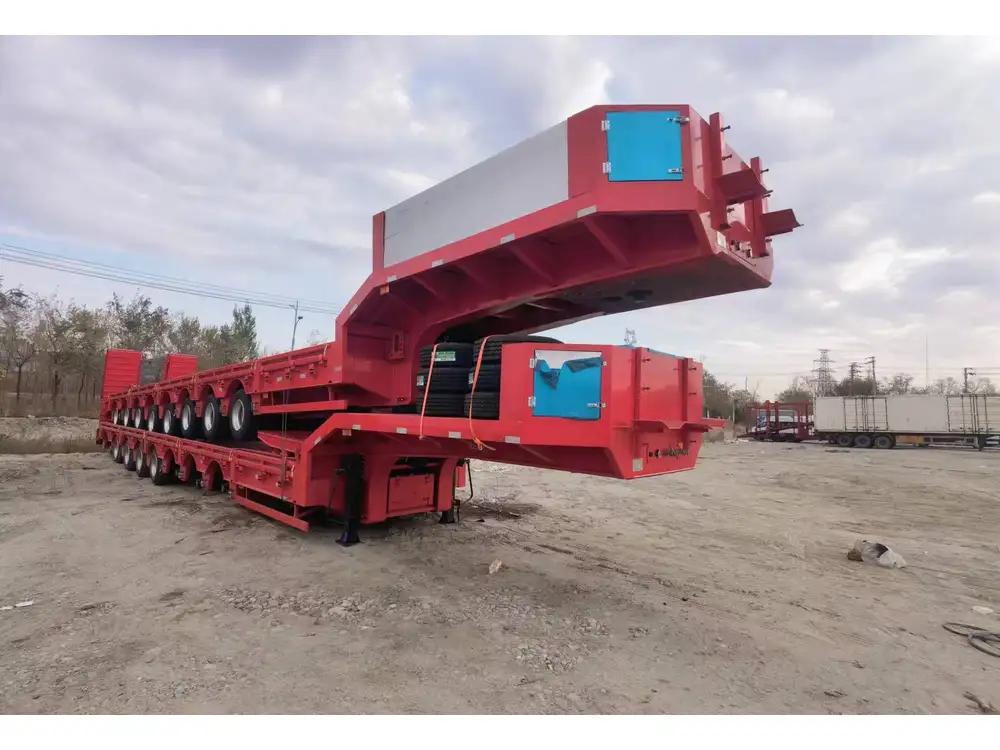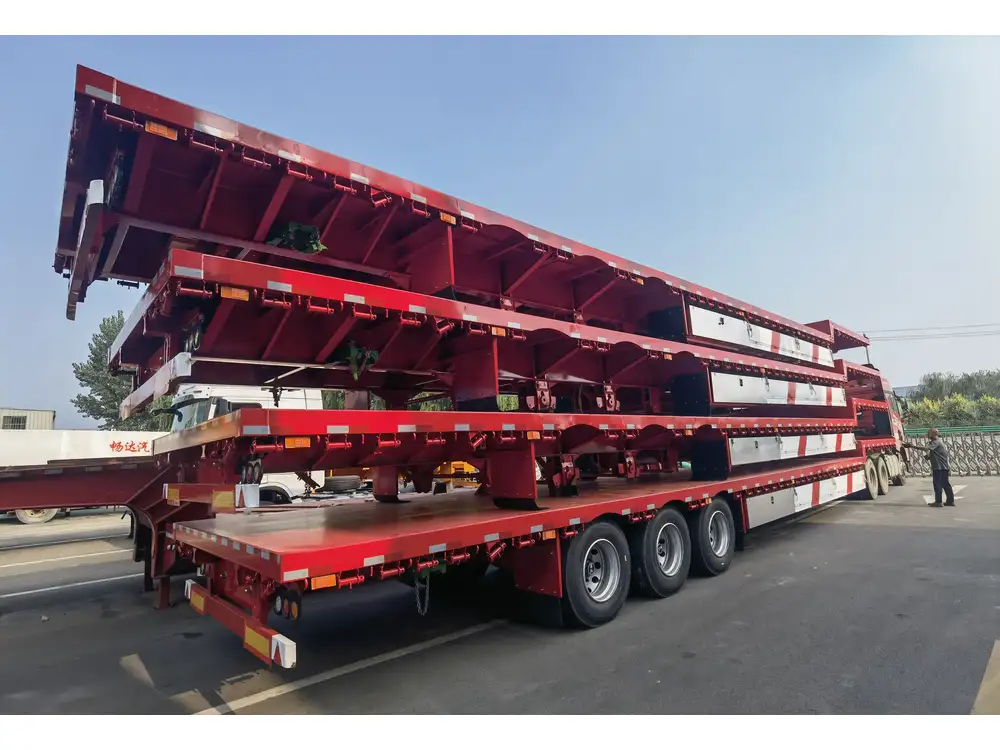The agricultural industry is a sprawling landscape where transportation plays a pivotal role in the logistics of products like hay. For those involved in this sector, understanding the efficiency of transporting round bales is crucial. When asking the question, “How many round bales fit on a semi trailer?” several factors come into play that determine the optimal load. This article provides a detailed look at the various elements involved in this calculation and offers insights to enhance your operational efficiency.
Understanding Semi Trailer Dimensions
To assist in determining the number of round bales that can fit on a semi trailer, we first need to consider the standard dimensions of commonly used semi trailers. Here’s a quick overview of typical trailer specifications:
| Trailer Type | Length | Width | Height |
|---|---|---|---|
| Standard Flatbed | 48-53 ft | 8.5 ft | 5-6.5 ft |
| Enclosed Trailer (V-Nose) | 48-53 ft | 8 ft | 6.5 ft |
| Step Deck Trailer | 48-53 ft | 8.5 ft | 2-3 ft (front), 4-5 ft (rear) |
| Lowboy Trailer | 48-53 ft | 8.5 ft | 18-24 in |
Key Considerations in Dimensions
Space Allocation: Depending on your trailer type, you may have different available cubic space. Notably, flatbed trailers generally provide better access for loading and unloading round bales as they do not have sidewalls, unlike enclosed trailers.
Maximum Weight Load: A standard semi trailer typically permits a maximum weight limit ranging between 80,000 lbs, including the weight of the trailer itself. The payload capacity must be taken into consideration to avoid penalties and ensure safety.

Round Bale Specifications
To establish how many round bales fit on a semi trailer, we need to know the average size and weight of a round bale. The common dimensions of a standard round hay bale are:
- Diameter: Approximately 4-5 feet
- Weight: Roughly 600-1,200 lbs, depending on the type of hay and moisture content
Considering these dimensions, the actual volume occupied by a round bale can provide a clearer picture of how many can fit.
Volume Calculation
The volume ( V ) of a cylinder (which approximates the shape of a round bale) can be calculated using the formula:
[ V = \pi r^2 h ]Where:
- ( r ) is the radius (half the diameter)
- ( h ) is the height of the bale (could assume around 3 feet for an average round bale)
Example Calculation
Assuming we have a round bale with a diameter of 4.5 feet:
- Radius ( r = 2.25 ) feet
- Height ( h = 3 ) feet
Calculating the volume:
[ V \approx 3.14 \times (2.25^2) \times 3 \approx 47.68 \text{ cubic feet} ]
Trailer Capacity in Cubic Feet
A standard 53-foot flatbed semi trailer has a width of approximately 8.5 feet, and a height of 5.5 feet (though height will be less when factoring in practical loading). Therefore, the volume would be:
[ Volume_{trailer} \approx 53 \times 8.5 \times 5.5 \approx 2,495.75 \text{ cubic feet} ]Calculating Round Bales Per Trailer Load
Now we can determine how many round bales fit in a trailer:
[ \text{Number of Bales} = \frac{\text{Volume of Trailer}}{\text{Volume of One Bale}} = \frac{2,495.75}{47.68} \approx 52.3 ]Practical Implications
In reality, we round down to a more practical number, so approximately 52 round bales can fit on a 53-foot semi trailer, contingent on factors such as:
- Load distribution
- Regulatory weight limits
- Loading procedure and safety measures

Factors Impacting Load Capacity
While the above calculations provide a useful estimate, consider the following factors that may affect the actual number of round bales transported:
1. Cargo Weight Regulations
Each state has different payload regulations. It is essential to verify the maximum weight permissible to fully utilize the trailer capacity without incurring fines.
2. Bales’ Compression and Durability
The type of hay can affect its structure. More durable bales can handle some compression, allowing for tighter packing. However, over-compressing can result in damage.

3. Loading and Unloading Equipment
Consider the tools used for loading and unloading. A forklift or specialized equipment can permit stacking configurations that might change how many bales can be loaded efficiently.
4. Orientation of Bales
The arrangement of the bales significantly impacts total quantities. Depending on how you orient the bales (stacking horizontally vs. vertically), the fit can vary substantially.
5. Aisle Space for Secure Transportation
Leave sufficient spacing between bales if required for securing them during transit. Straps and tarps might add to the space consumption, affecting the overall count.

Optimization Strategies for Transporting Round Bales
Maintaining efficiency in transportation is critical for any manufacturer. The following strategies can improve how many round bales fit on your semi trailer:
1. Optimize Loading Patterns
Experiment with different bale arrangement patterns to maximize space usage. This might involve:
- Stacking in layers
- Utilizing empty space creatively
2. Enhance Equipment Capability
Using advanced loading equipment can reduce time and labor costs, enabling faster and more effective loading procedures.

3. Regular Weight Checks
Incorporate regular checks on load weight before departure to ensure compliance with transportation laws.
4. Choose the Right Trailer Type
Analyzing your transport needs could prompt considering specialized trailers designed explicitly for agricultural transporting, thus increasing your potential capacity.
5. Collaborate with Local Logistics
Building partnerships with local logistics firms can facilitate better route planning and conveyance, which can enable timely deliveries and optimized loading cycles.

Conclusion
Determining how many round bales fit on a semi trailer involves multifaceted calculations and strategic considerations. From understanding the dimensions of semi trailers and round bales to implementing better loading practices, there are numerous steps one can take to optimize hay transport. As agricultural demands evolve, staying ahead with operational efficacy is essential. Engaging with these logistical intricacies not only enhances productivity but significantly contributes to the bottom line in today’s competitive market.
By considering all facets of transportation logistics, manufacturers can maximize their efficiency, ensuring that products reach their destination safely, securely, and economically.



